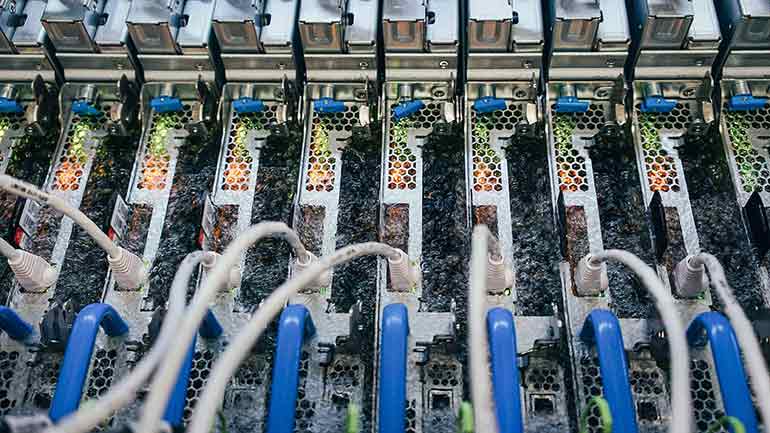Microsoft trials two-phase immersion cooling
10th April 2021
USA: Microsoft claims to be the first cloud provider running two-phase immersion cooling in its datacenter in Quincy, WA.
Two-phase immersion cooling involves submerging electronic components into a bath of dielectric heat transfer liquid. Unlike water, the fluid inside the tank is harmless to electronic equipment and engineered to boil at 50ºC. The low-temperature boil enables the servers to operate continuously at full power without risk of failure due to overheating.
Inside the tank, the vapour rising from the boiling fluid contacts a cooled condenser in the tank lid. The condenser coils are connected to a separate closed loop system that uses fluid to transfer heat from the tank to a dry cooler outside the tank’s container. Because the fluid in these coils is always warmer than the ambient air, there’s no need to spray water to condition the air for evaporative cooling.
Microsoft investigated liquid immersion as a cooling solution for high-performance computing applications such as AI. Among other things, the investigation revealed that two-phase immersion cooling reduced power consumption for any given server by 5% to 15%.
The findings motivated the Microsoft team to work with Wiwynn, a datacenter IT system manufacturer and designer, to develop a two-phase immersion cooling solution. The first solution is now running at Microsoft’s datacenter in Quincy.
“Air cooling is not enough,” said Christian Belady, vice president of Microsoft’s datacenter advanced development group in Redmond. “That’s what’s driving us to immersion cooling, where we can directly boil off the surfaces of the chip.”
Microsoft, together with infrastructure industry partners, is also investigating how to run the tanks in ways that mitigate fluid loss and will have little to no impact on the environment.
“If done right, two-phase immersion cooling will attain all our cost, reliability and performance requirements simultaneously with essentially a fraction of the energy spend compared to air cooling,” said Ioannis Manousakis, a principal software engineer with Microsoft Azure.







